How Oil Industry Lobbyists Played the Long Game to Access a Fuel-Rich Corner of Alaskan Wilderness
The story of how the oil company ConocoPhillips overcame years of resistance from courts, native Alaskans, environmental groups and several federal agencies reveals the truth about how Washington really works. Joseph Sohm / Shutterstock
1
2
3
Joseph Sohm / Shutterstock
1
2
3
This story was co-published by ProPublica and Politico Magazine.
From his seat in the small plane flying over the largest remaining swath of American wilderness, Bruce Babbitt thought he could envision the legacy of one of his proudest achievements as Interior Secretary in the Clinton administration.
Babbitt was returning in the summer of 2013 from four sunlit nights in Alaska’s western Arctic, where at one point his camp was nearly overrun by a herd of caribou that split around the tents at the last minute. Now, below him, Babbitt saw an oil field — one carefully built and operated to avoid permanent roads and other scars on the vast expanse of tundra and lakes.
Under the deal he’d negotiated just before leaving Interior in 2000, that would be the only kind of drilling he thought would be allowed in the 23 million acres of the National Petroleum Reserve-Alaska, which, despite its name, is a pristine region home to one of the world’s largest caribou herds and giant flocks of migratory birds. The compromise was fair and, he hoped, enduring — clear-eyed about the need for more domestic oil but resolute in defense of the wilderness.
The deal lasted barely 15 years.
In February, the Obama administration granted the ConocoPhillips oil company the right to drill in the reserve. The Greater Mooses Tooth project, as it is known, upended the protections that Babbitt had engineered, saving the oil company tens of millions and setting what conservationists see as a foreboding precedent.
How ConocoPhillips overcame years of resistance from courts, native Alaskans, environmental groups and several federal agencies is the story of how Washington really works. It is a story that surprised even a veteran of the political machine like Babbitt.
As environmentalists, energy companies and politicians brawled over big symbols like the Keystone pipeline and offshore drilling in the Arctic Ocean, the more immediate battles over climate change and fossil fuels were being waged over projects like Greater Mooses Tooth — out of the public eye, away from the cable-news shout-fests and White House protests.
The fight was unfolding in the real Washington — where influence accrues across election cycles almost without regard to who’s in power. In this Washington, companies bend decisions of major import in their direction by overwhelming a bureaucracy that, after years of budget cuts, outsourcing and inattention, lacks the resources and morale to hold its own. Increasingly, industry spins the revolving door. It brings in people who learn there’s serious money to be made after leaving government jobs, by sticking around the capital and making it their career.
Big industries like oil play Washington as a long game, exhibiting a persistence too often lacking in the people in charge of safeguarding the public good. And to win the long game, to push ahead on frontiers like Greater Mooses Tooth, you need someone who is a real player.
‘Aggressively Pursuing the Agenda’
In a city known for its status seekers, Andrew Lundquist was one of the legions who preferred to recede into the background. He was earnest, wary and remarkably unflappable. Even his appearance discouraged notice: average build, short sandy hair and a sober, almost melancholy bearing. He rarely was quoted in the press, and declined to be interviewed for this story.
He grew up in Fairbanks. His father, James, was a surgeon, who came from Minnesota to work at a new clinic in town. The family’s eight kids fished in the Chena River, built rafts, and camped out on the islands.
There’s a solidarity that comes with living in a place that’s so cold in winter your nose hairs freeze and that your tires go a little flat every morning. You get to know just about everyone. For the Lundquists, who leaned Republican, that meant being friends with both a U.S. senator, Ted Stevens, who once moved into a house they had just left, and future governor and senator Frank Murkowski and his family, who lived just up the river.
By the time Lundquist reached college age in the late 1970s, Alaska’s economy had transformed from a sprawling outpost for frontier strivers into an energy powerhouse, driven by vast reserves of oil discovered around Prudhoe Bay and pumped south through an 800-mile pipeline.
Lundquist got a degree in finance at the University of Alaska in Fairbanks, but not before a couple of short detours. He headed up north to the North Slope oil fields, where he managed a pipeline welding crew, and made a foray into the home-building business with Frank Murkowski’s son. “He wanted to see the oil fields personally — that work helped deepen his understanding,” recalled a classmate, Peter Van Flein.
Once he’d learned how to make a living with his hands, though, Lundquist headed in a much different direction — to Washington. In the waning years of the Reagan administration Lundquist took a job as a lowly go-fer in the Senate office of his family friend, Ted Stevens. “Stevens taught me really how to legislate and in a broader sense how to work in Washington, D.C.,” Lundquist would say later.
In 1995, as Republicans took control of Congress, he switched from one family friend to the other — Frank Murkowski was now a senator too, and in line to be chairman of the energy committee, overseeing Alaska’s dominant industry. Lundquist, now equipped with a law degree, was soon director of the committee’s 40-person staff.
On the Senate committee, he maintained a cordial working relationship with his Democratic counterparts, holding a Monday meeting with them no matter what was on the docket. Together, the panel worked through federal land exchanges, boundary adjustments, nuclear waste disposal and other difficult issues.
But in one area, Lundquist’s transactional exchanges with Democrats took on a harder edge: Alaskan oil. Over and over, he’d demand to know what it would take for Jeff Bingaman, the New Mexican who was the top Democrat on the panel, to open more of the North Slope to drilling. When it came to that, Bingaman recalled, “He was aggressively pursuing the agenda of his employer.”
‘We Had to Look West’
For many in the Lower 48, the notion of expanded drilling in the Arctic had been tainted by images of sea otters and harlequin ducks coated in crude oil after the Exxon Valdez ran aground in Prince William Sound in 1989. But for many in Alaska, it had become a question of economic survival.
Since peaking in 1988 at just above two million barrels a day, production from the Prudhoe Bay fields had been declining precipitously. Without more supply, the Trans-Alaska Pipeline was at risk of clogs and corrosion — and the state’s coffers were at risk of steep deficits.
The cry went up, louder than before, to drill within the Arctic National Wildlife Refuge, the 19-million-acre expanse east of Prudhoe Bay. The refuge’s coastal plain was believed to hold far more stores of crude and less wildlife than the National Petroleum Reserve-Alaska, known as NPR-A. But, with its stunning white peaks of the Brooks Range, the refuge had long been a more potent symbol of virgin land. The expanse to the west, by contrast, had been set aside as a fuel reserve for the U.S. Navy in 1923, thus giving it its mundane name.
Your support matters…Independent journalism is under threat and overshadowed by heavily funded mainstream media.
You can help level the playing field. Become a member.
Your tax-deductible contribution keeps us digging beneath the headlines to give you thought-provoking, investigative reporting and analysis that unearths what's really happening- without compromise.
Give today to support our courageous, independent journalists.

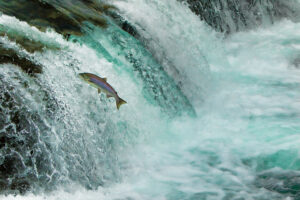
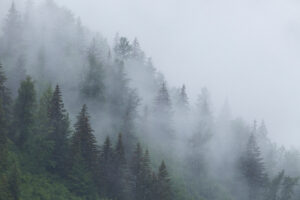
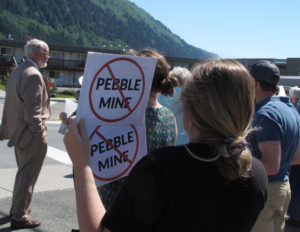

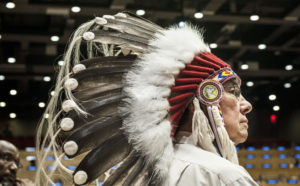
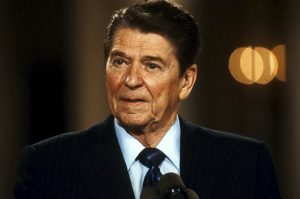
You need to be a supporter to comment.
There are currently no responses to this article.
Be the first to respond.